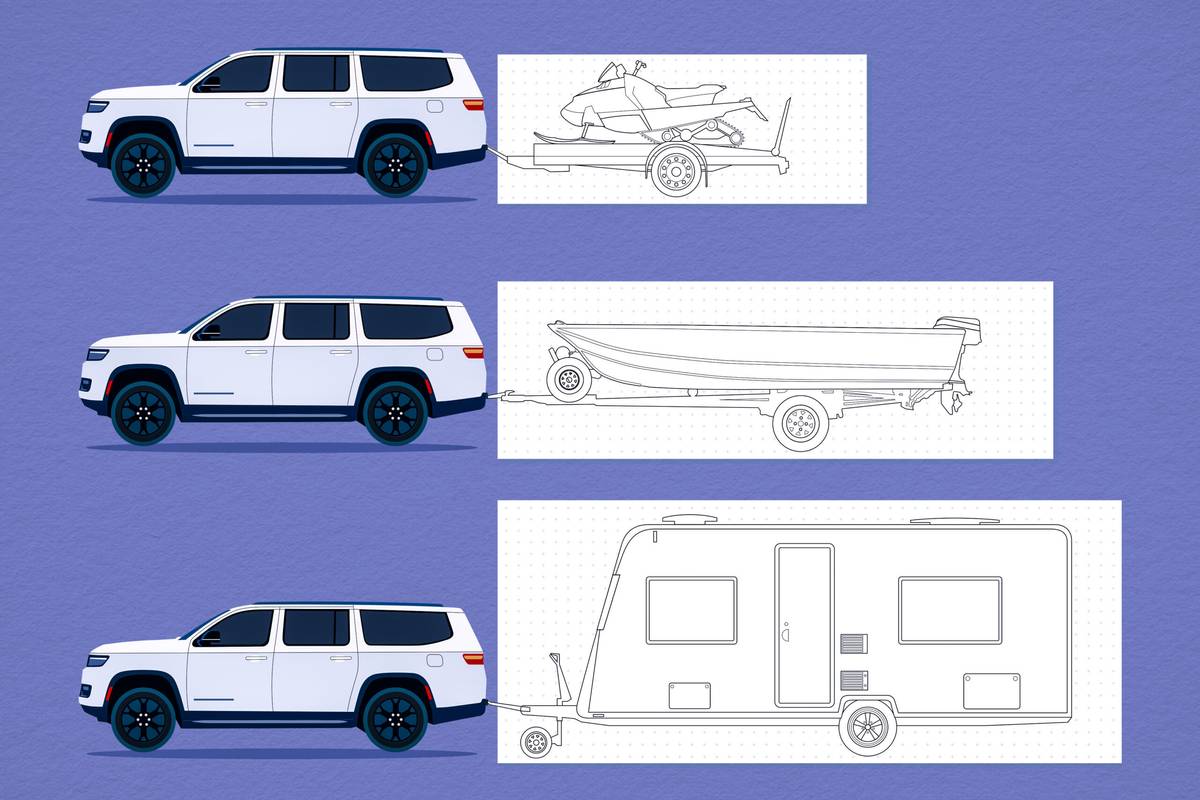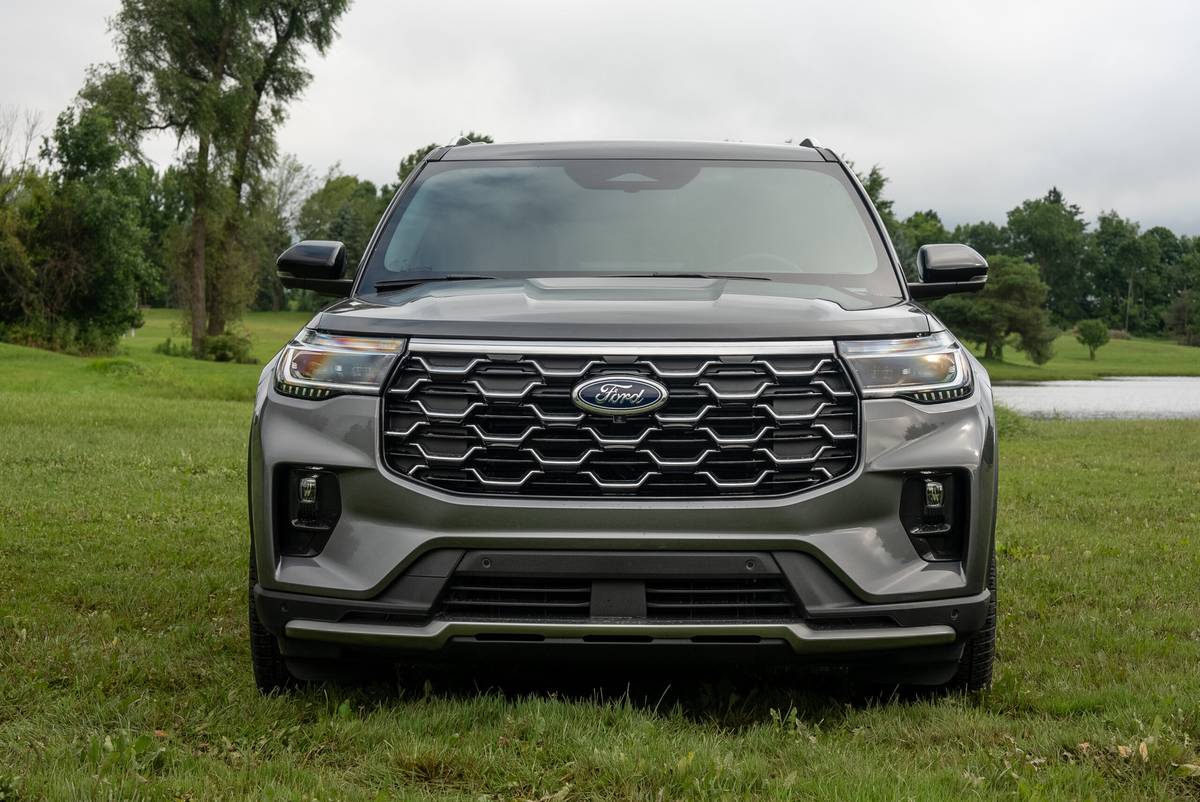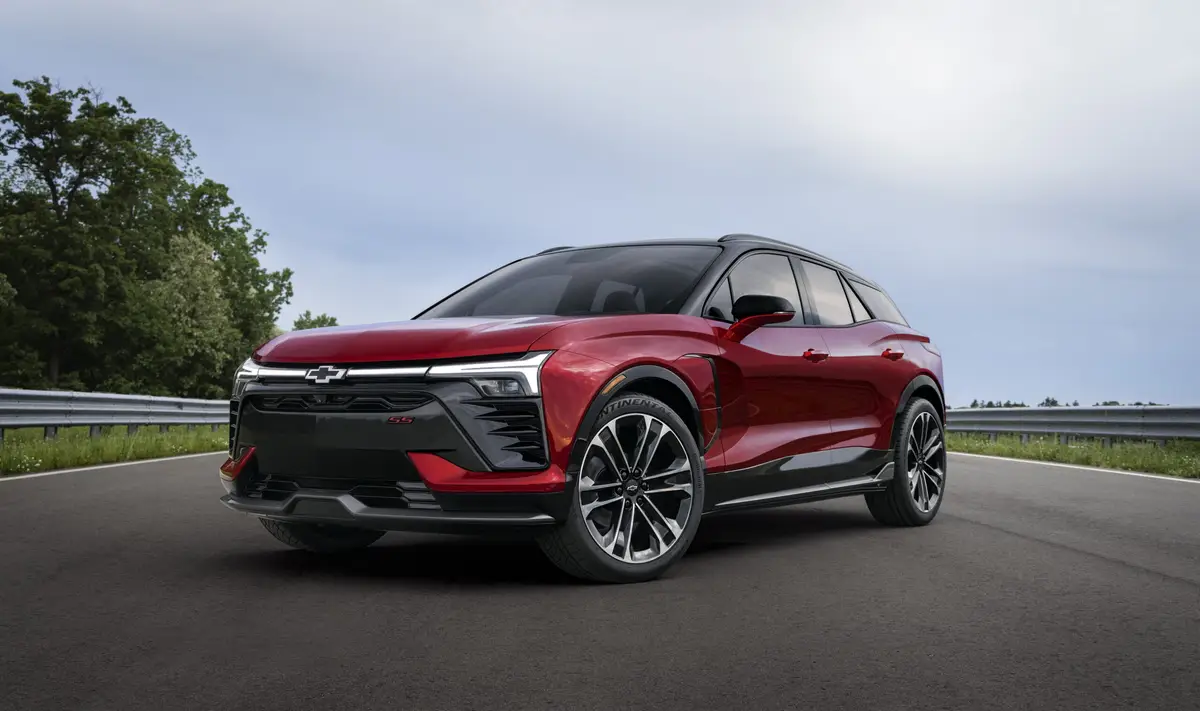2012 Ford Focus Sedan: Car Seat Check

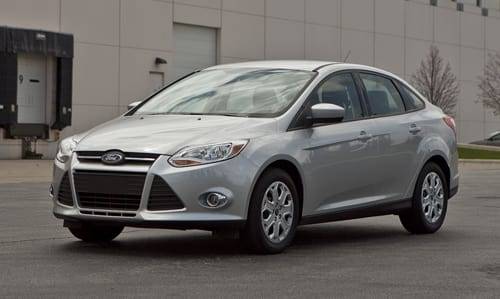
This Car Seat Check was originally published in May 2011 on MotherProof.com.
The Ford Focus has been completely redesigned for the 2012 model year. This compact car comes both as a sedan, which we tested, and a hatchback. The Focus seats five.
For the Car Seat Check, we use a Graco SnugRide 30 rear-facing infant-safety seat, a Britax Roundabout convertible child-safety seat and Graco high-back TurboBooster seat.
The front seats are adjusted to a comfortable position for a 6-foot driver and a 5-foot-8 passenger. The three child seats are installed in the second row. The booster seat sits behind the driver’s seat, and the infant seat and convertible seats are installed behind the passenger seat. We also install the infant seat in the second row’s middle seat with the booster and convertible in the outboard seats to see if three car seats will fit. If there’s a third row, we install the booster seat and a forward-facing convertible.
Here’s how the 2012 Focus sedan did in Cars.com’s Car Seat Check:
Latch system: The Focus has two sets of lower Latch anchors in the outboard seats. While the anchors aren’t visible, they’re not buried too deeply in the seat bight, where the back and bottom cushions meet. There’s also a gap between the back and bottom cushions that makes it easy to reach in and find the anchors.
The Focus’ large head restraints in the second row often interfered with our forward-facing convertible car seat’s installation. We found it was easier to get at the three tether anchors if we removed the head restraints. The tether anchors are easy to use once you can get at them. Removing the head restraints is a multistep process and somewhat frustrating. First, the seatback must be folded forward. However, since the backseat isn’t split, you have to fold the whole seat, which is heavy. Then you can remove the head restraint. This process should be a lot easier, and it is in many other cars.
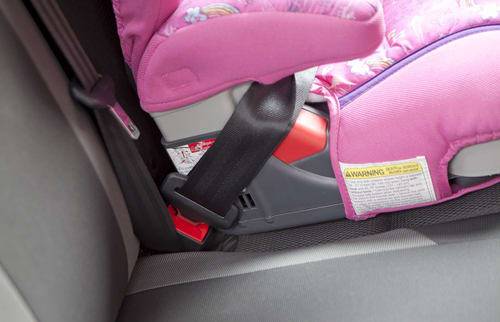
Booster seat: The Focus’ backseat has seat bolsters on the back and bottom cushions that pushed our booster seat toward the seat belt buckle. The buckle stands up just high enough to keep the booster from riding over it, though. Kids should be able to use the buckles independently.

Convertible seat: We had to remove the head restraint to get a good fit with the forward-facing convertible. Once we did that, we had no problems installing this car seat. The rear-facing convertible fit well in the Focus, and there was no need to move the front passenger seat forward.
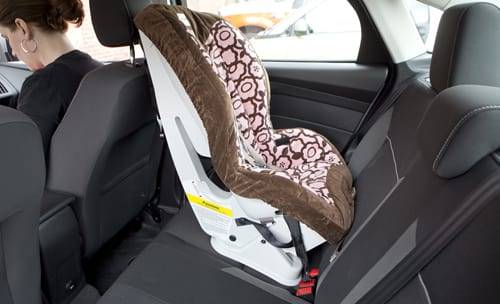
Infant-safety seat: To get this rear-facing car seat to fit in the Focus, we had to move the front passenger seat forward more than an inch. The front passenger still had good legroom, though.
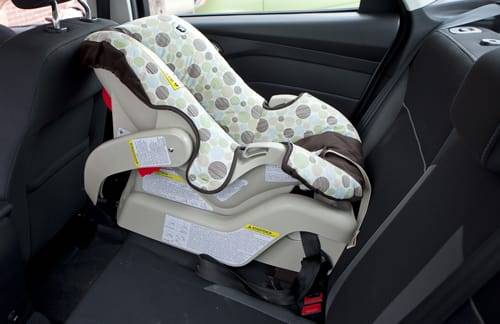
How many car seats fit in the second row? Two
Editor’s note: For three car seats — infant-safety seat, convertible and booster seats — to fit in a car, our criterion is that a child sitting in the booster seat must be able to reach the seat belt buckle. Parents should also remember that they can use the Latch system or a seat belt to install a car seat.

Editor-in-Chief Jennifer Newman is a journalist with more than 25 years of experience, including 15 years as an automotive journalist at Cars.com. Jennifer leads the Editorial team in its mission of helping car shoppers find the vehicle that best fits their life. A mom of two, she’s graduated from kids in car seats to teens behind the steering wheel. She’s also a certified car-seat technician with more than 12 years of experience, as well as member of the World Car Jury, Automotive Press Association and Midwest Automotive Media Association. LinkedIn: https://www.linkedin.com/in/jennilnewman/ Instagram: @jennilnewman
Featured stories
